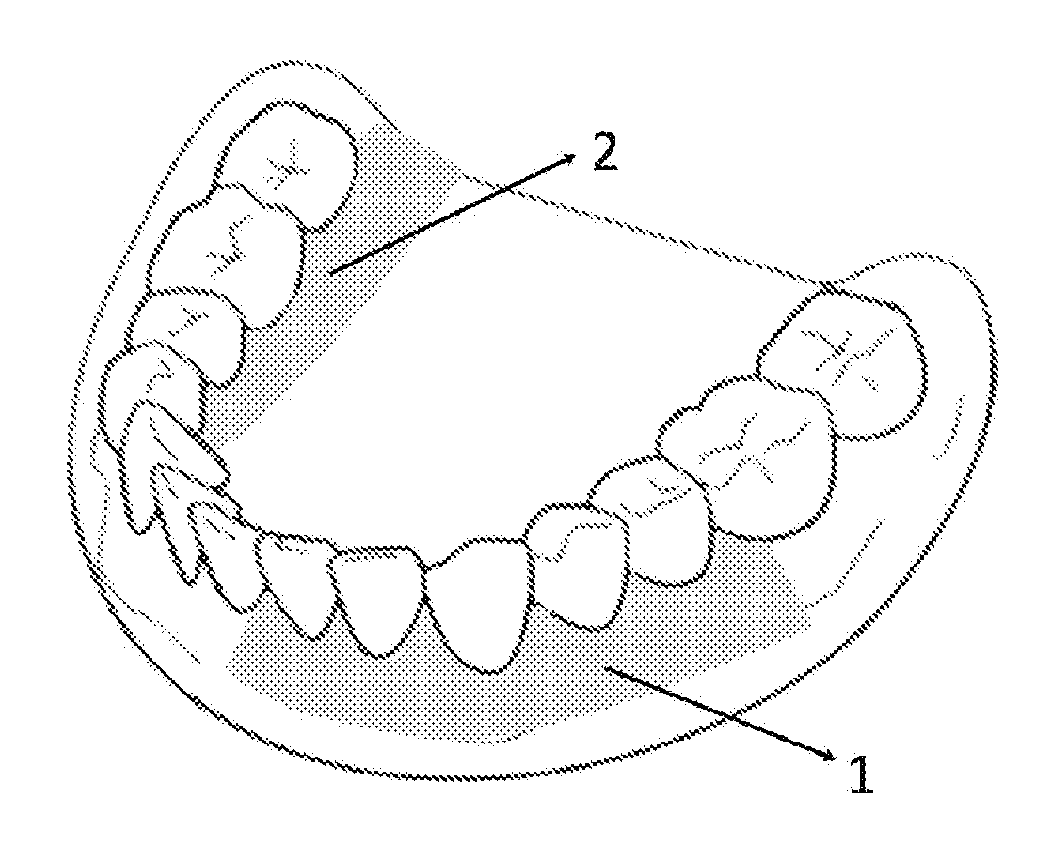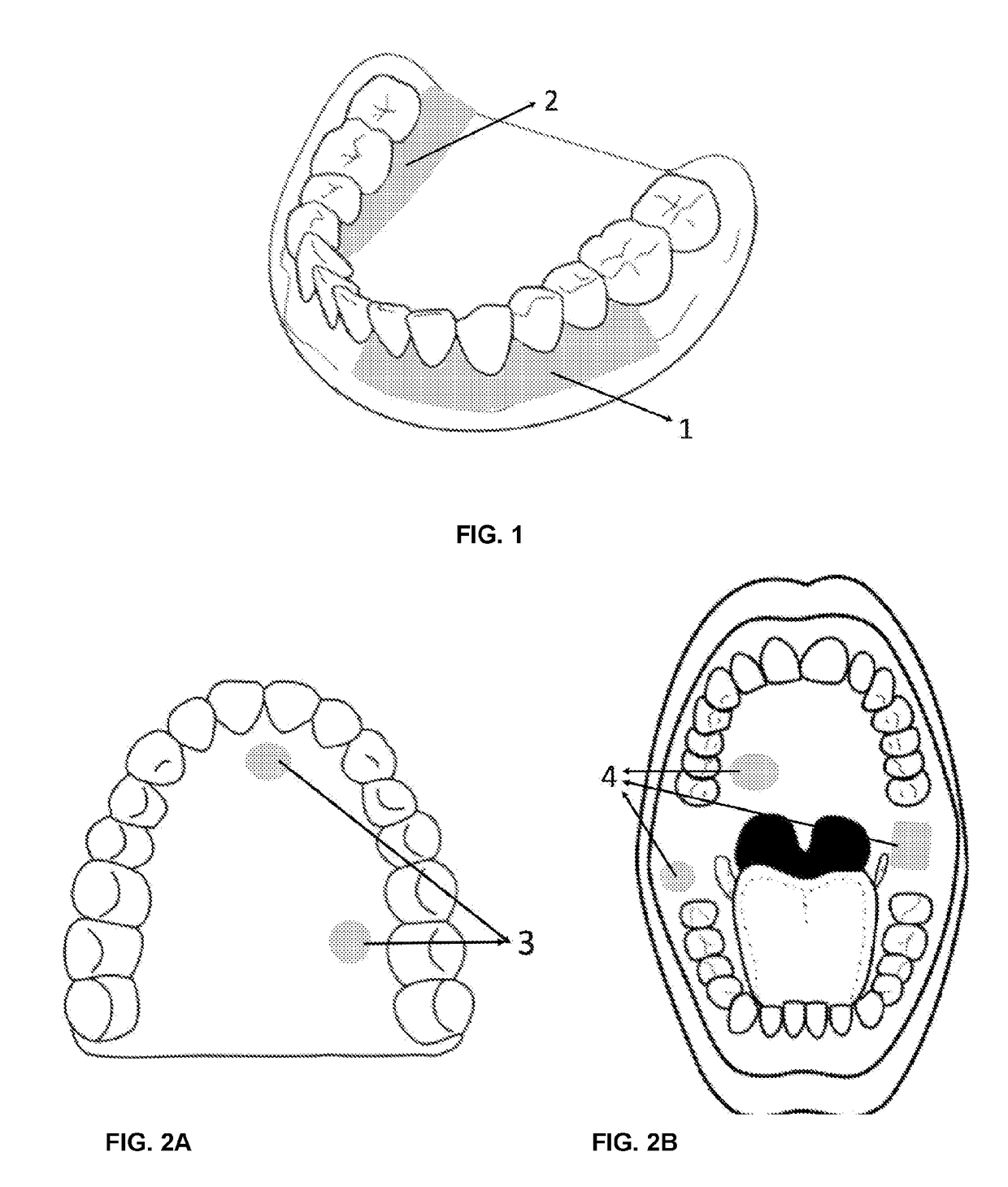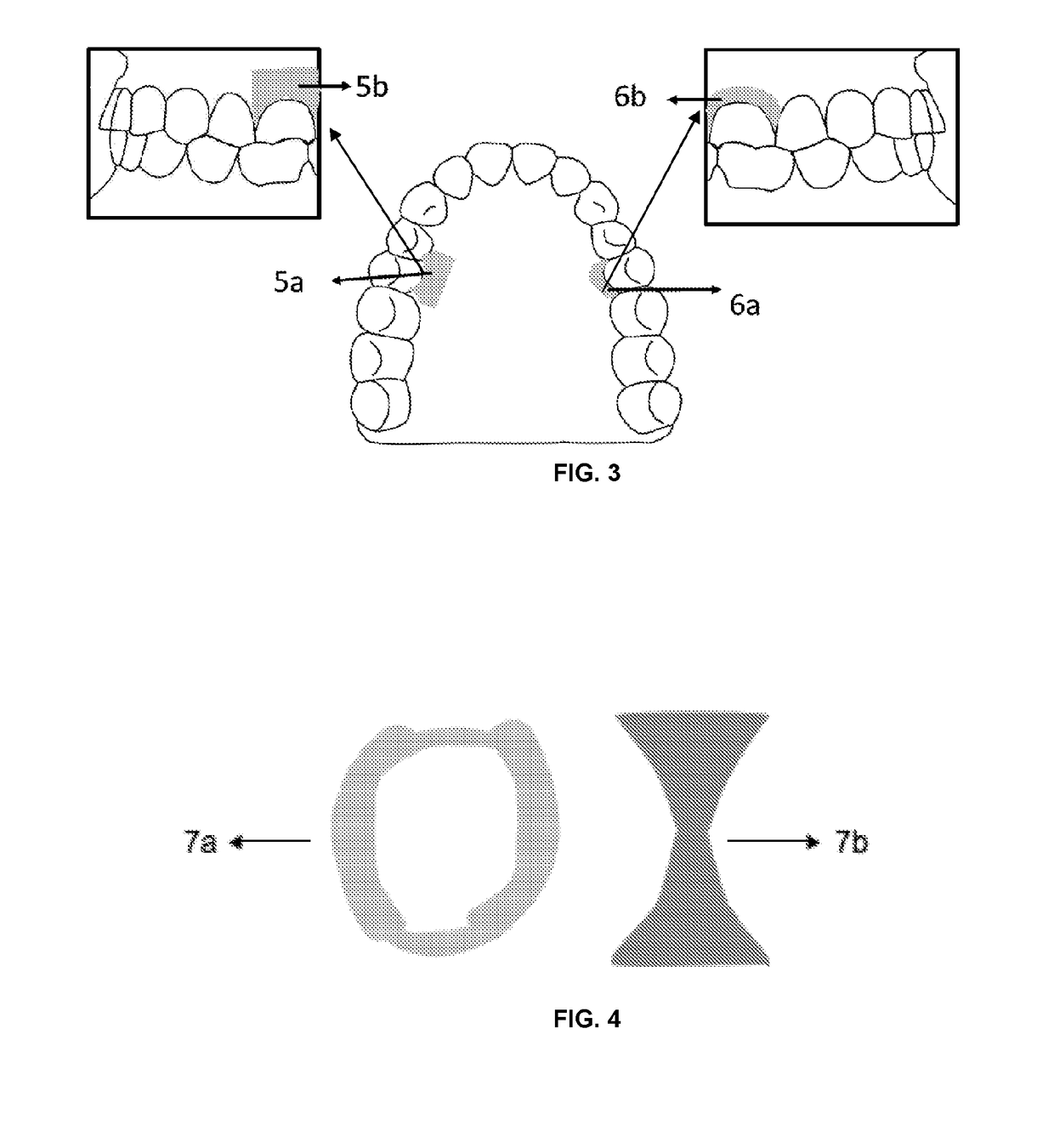Filmogenic compositions for topical anaesthetic bioadhesives - tabs, for controlled release of active principles and topical anaesthetic bioadhesives
a bioadhesive and filmogenic technology, applied in the health field, to achieve the effect of reducing patient discomfort, adequate adhesion, and low cytotoxicity
- Summary
- Abstract
- Description
- Claims
- Application Information
AI Technical Summary
Benefits of technology
Problems solved by technology
Method used
Image
Examples
Embodiment Construction
[0108]One aspect of the invention is the filmogenic composition for the controlled release of active ingredients, based on xanthan, was useful for the preparation of topical anesthetics adhesive.
[0109]Another aspect of the invention is the mono, bi or multilayer topical anesthetic adhesives obtained after processing the compositions of the invention.
[0110]Yet another aspect of the invention involves the use of the adhesives obtained according to the invention.
[0111]Advantageously, the adhesives of the invention exhibit effective adhesion, the area of application control and numbed region due to the use of a film, dosage control, water solubility control as well as the encapsulation of the unpleasant flavors of certain anesthetics or other drugs added together.
[0112]The filmogenic compositions for the controlled release of active ingredients according to the invention have a biomatrix or biopolymer matrix and structural polymer xanthan, biodegradable biomolecule and is biocompatible ...
PUM
| Property | Measurement | Unit |
|---|---|---|
| melting temperature | aaaaa | aaaaa |
| diameter | aaaaa | aaaaa |
| diameter | aaaaa | aaaaa |
Abstract
Description
Claims
Application Information
 Login to View More
Login to View More - R&D
- Intellectual Property
- Life Sciences
- Materials
- Tech Scout
- Unparalleled Data Quality
- Higher Quality Content
- 60% Fewer Hallucinations
Browse by: Latest US Patents, China's latest patents, Technical Efficacy Thesaurus, Application Domain, Technology Topic, Popular Technical Reports.
© 2025 PatSnap. All rights reserved.Legal|Privacy policy|Modern Slavery Act Transparency Statement|Sitemap|About US| Contact US: help@patsnap.com



